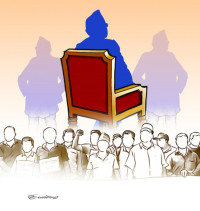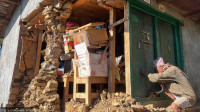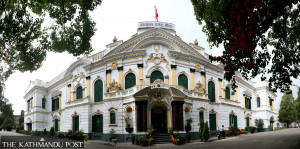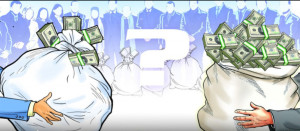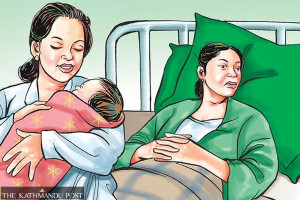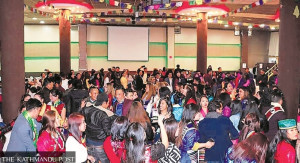Columns
Missions impossible
Nepali politics is so volatile that it is hard to predict what will happen in six months, much less four years.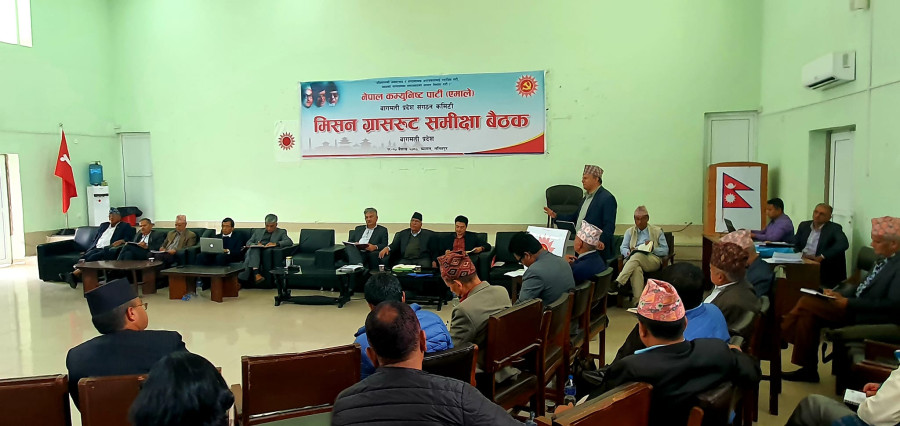
Biswas Baral
Four years is a long time in politics. In Nepal, where post-1990 governments have lasted an average of nine months, it is an eternity.
Big or small, most of Nepal’s political parties are embarking on their own version of “Mission 84”, the next set of elections four years (and two months) down the road. Why the rush, you wonder?
For established parties, this jump-start to their electoral campaigns betrays a deep sense of insecurity, even an existential crisis. The recent success of the Rabi Lamichhane-led Rastriya Swatantra Party (RSP) and the popularity of Balendra Shah and Harka Sampang as mayors of Kathmandu and Dharan, respectively, have shaken them to the core. If they don’t hit the ground running now, they expect the newbies to trounce them in the next elections.
More understandable are the party expansion campaigns of the RSP and CK Raut’s Janamat Party, the two new stars of the November 2022 elections. They, too, have an eye on the 2027 (2084 BS) elections.
Nepali politics is so volatile that it is hard to predict what will happen in six months, much less four years. The Pushpa Kamal Dahal-led government has barely survived nine months in office, with KP Sharma Oli constantly tugging at the rug under the prime minister. Multiple sources of instability lurk all around, not least the never-ending drama in Koshi Province that might push it into early elections—and throw national politics into turmoil.
So, planning the nitty-gritty of elections so far off is an exercise in futility. What the political parties represented in Parliament should be doing right now is getting down to the business of governing and legislating in the public interest. By not doing so, they are dishonouring the mandate of 2022.
The established parties are steadily losing ground. There have been two full elections since the 2015 promulgation of the new constitution. The CPN-UML got 26.9 percent of all PR votes cast in the 2022 general elections, with the Nepali Congress hot on the heels at 25.7 percent, followed by the Maoist Centre at 11.1 percent. Five years before that, the vote shares were: 33.25 percent for the UML, 32.78 percent for the Congress and 13.66 percent for the Maoist Centre.
Then, in the 2023 byelections, in the Chitwan-2 constituency, the UML candidate won 14.49 percent of the votes while the Congress candidate got 14.14 percent. The winner, RSP’s Rabi Lamichhane, secured 70.03 percent. Likewise, in the Tanahun-2 byelections, in the heart of the Congress land, RSP's Swarnim Wagle got 54.57 percent votes against 31.45 percent for the Congress candidate and 13.27 percent for the UML candidate.
The traditional parties say they want to strengthen their organisation and cadre base. Yet many cadres, especially the young ones, are uninterested in renewing their party affiliation and fast decamping to the newer outfits.
Without a change in leadership, the likes of the Congress and the UML will struggle to be competitive again. People are in no mood right now to vote for the parties led by Deuba, Oli or Dahal; the calls for party and national renewal coming from these repeatedly tried-and-tested faces just do not ring true.
At least in the Congress, Sher Bahadur Deuba cannot run for party president again and so a new face will lead the party into the next elections. Whether the new leader is an old establishment face or someone the public trusts more will make all the difference in its electoral fortunes.
The UML and the Maoist Centre are at a disadvantage on this front. In the UML, Oli is again likely to lead the party into the next round of elections. But Oli’s reputation as a leader has been tarred by his repeated dissolution of Parliament in his previous term as prime minister. Oli’s post-blockade nationalist credentials are also much diminished. If, by some fluke, Bidya Devi Bhandari takes up UML leadership, the party’s chances won’t improve much either. Bhandari’s public standing is arguably worse than Oli’s, following her two highly controversial terms as the country’s president.
Currently, the UML’s target of expanding its cadre base and winning 51 percent of all votes cast in the next election looks implausible. If anything, the party is going backwards. It has been able to renew the memberships of only around 50 percent of its cadres: It has done the best in Gandaki and Lumbini provinces, with a 60-65 percent renewal rate, while in Madhesh, it could retain only 30 percent of its members.
No such figures are available for the Maoist Centre. But with the leadership scrambling for resources to run arguably the most expensive party machinery in Nepal, Dahal and his once revolutionary party are now fighting for their very existence. Perhaps no other figure in Nepali politics is trusted as little as the Janus-faced Dahal.
But what about the RSP and, as many now dare to whisper, a new party of Balendra Shah? While there is considerable youth support for these new rockstars of Nepali politics, their fans, unbound by any ideology, are fickle. If, say, Gagan Thapa is tomorrow elected the Congress leader, he could, at the head of a party with solid pro-democratic and liberal history, capture the public imagination again.
The RSP’s recent struggle to come up with a political document is also suggestive of the challenges that lie ahead. So far, it has been able to sell, to borrow from Yuval Noah Harari, “simple and compelling” stories to the masses—and Lamichhane is a consummate raconteur. (And so is a rapping Shah, for that matter.) But the reality of governing the country is far messier. The task is made harder still from a place of an ideological void that the RSP occupies.
The tea is that the grandees of big parties are betting on the RSP’s split. It is not uncommon to hear top Congress and UML leaders discuss possible ways of pitting Lamichhane against Shah come 2027 so that they cancel each other out.
The problem again is that these calculations are premature. Nepal’s political course is filled with bumpy roads and hairpin bends. Moreover, if the national parties cannot fulfil the mandate they already have, how do people trust them to deliver four years later?




 7.12°C Kathmandu
7.12°C Kathmandu




